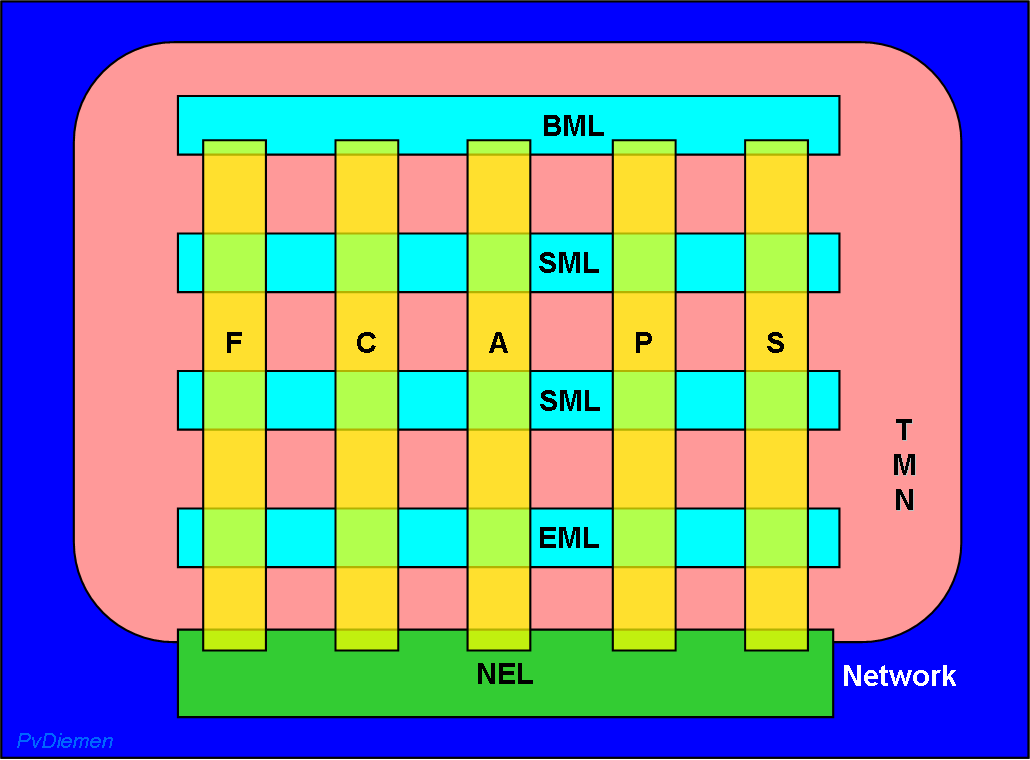
Last update PvD
3 MFA
Management Functional Areas
M.3400: The Functional Management approach to TMN
Overview
[M.3010]: Plan, provision, install, maintain, operate and administer telecommunication networks and services.
[M.3400]: A TMN management function is the smallest part of the TMN management service as perceived by a user of the {management} service. In reality it will generally consist of a sequence of actions on a defined managed object or objects.
The management functional areas are borrowed from the definitions for Management of Open System Interconnect X.7xx-series.
These Management Functional Areas (MFA) are orthogonal to the hierarchy of functional layers (LLA: NEL/EML/NML/ SML/ BML); they are commonly indicated by their first letters 'FCAPS':

One can view them as groups of management operations, each considering a particular aspect of network management. The work will be done by Operations System Functions (OSF) at the intersection of an MFA 'pillar' and an LLA layer. However, these operational areas are not autonomous contrary to the suggestion by the 5 pillars in the drawing above ! And the actual scope of operations in each area will vary with the hierarchical layer (capabilities at the BML will not be significant).
Note: The recommendations typically refer explicitly to Network Elements; a small note mentions that the management objective also includes the TMN itself. Outside the TMN-world this is known as 'self management' or 'system management', and indicated as 'General Management' in this document (GM, to avoid confusion with Security Management).
[M.3010]: The OSF processes information related to the telecommunications management for the purpose of monitoring/coordinating and/or controlling telecommunications functions including management functions {i.e. the TMN itself}.
Here is where the management capabilities are actually located. More on OSFs in chapter Generic Components & Interfaces.
There are a number of general functions not related to a particular functional area or hierarchical layer, but basically applicable to all of them (e.g. 'Log control functions'). These are called SMFs or SMURFs, listed in M.3400, and defined individually in the X.7xx- series. They are discussed in more detail in chapter System Management Functions.
Next section: FM
Up to Contents
Up to Index
=O=